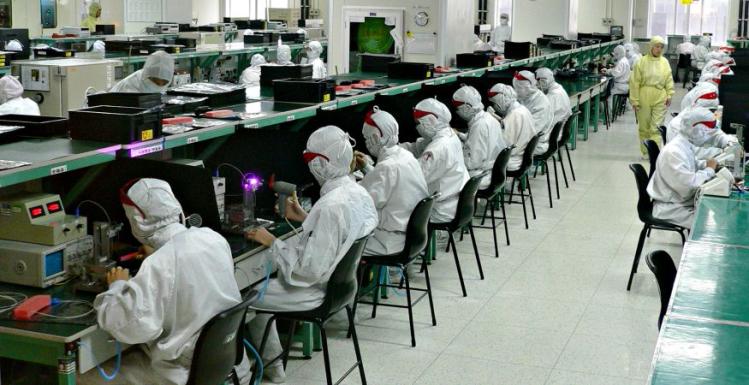
One of the most hopeful signs in the world economy over the past few decades has been the rapid growth in emerging markets—countries like China, Brazil, India, Indonesia, and miracle of miracles, even countries in sub-Saharan Africa. Blind-sided by a Great Recession created by reckless rich-country banks, they mostly did very well in the recovery, becoming favored destinations for Western fund managers.
Much of the impetus for emerging-markets growth came from China, as it spread its vast dollar holdings around the world, hoovering up ores, fuels, food, and other commodities to feed its expanding worldwide manufacturing presence. The Chinese engine is faltering now, strangling on its own pollution and dragged down by the pervasive corruption of its kleptocratic elite. The Chinese strongman Xi Jinping understands that for China to become a truly modern country, he has to break up the old Soviet-style state-owned enterprises, empower the private sector, and move into high-end services and R&D-intensive manufacturing. Whether he can pull that off is an open question. Even if he succeeds, it will be a perilous and drawn-out process, fraught with conflict.
Where does that leave the rest of the emerging-market economies? Unfortunately, there are grounds for pessimism. Dani Rodrik, a Turkish development economist at Harvard, points out that over the past century, many countries have achieved longish periods of rapid growth, but very few have actually made the jump into permanent middle-class developed-country status.
The original developed country was the United Kingdom, which was surpassed by the United States in the decade before the First World War. Core European countries, like Germany, Switzerland, and France, followed; after World War II, most of the rest of Europe joined them. Asian manufacturing and trading powers, Japan, Singapore, and later South Korea, added their weight, although a number of other Asian countries—mainland China, India, Malaysia, Vietnam, Laos, Thailand—clearly did not. Both Argentina and Venezuela enjoyed very rapid growth over considerable stretches, but never achieved permanent status as developed countries. Mexico is still on the edge, even decades after NAFTA. Brazil looked like it was finally on its way, but that is now in doubt. A surprisingly large number of African and Middle Eastern countries had prolonged growth spurts in the middle of the last century, but remain stuck in the “emerging market” mire. Russia and all the countries still within its sphere of influence may be hopeless, although Poland and the Baltic states seem to have broken Putin’s grip—permanently, one hopes.
The common factor for success, Rodrik’s research suggests, is the strength of the formal manufacturing sector—as opposed to traditional cottage-industry manufacturing. Formal manufacturing, even as a supplier of low-end hand-made components, requires linkages to modernity, ambitious proprietors, at least minimal capital, rationalized processes, accounting, and billing. Almost all countries have formal manufacturing sectors; the critical questions are how extensive they are and how much value they added.
Rodrik tracks two variables for national manufacturing sectors: the percentage of total employment it accounts for, and the level of worker income when that percentage is at its highest. The United States manufacturing sector paid $11,000 per employee in 1953 (in 1990 dollars) when its peak employment share reached about 27 percent. That was surpassed only by Germany when its manufacturing sector reached its peak employment share in 1970. At those levels of income, the manufacturing sector can throw off enough money to fund high-end services like accounting and law; make higher education and modern health care widely available; invest in R&D; and offer a broad range of advanced consumer products—in short, all the accoutrements one would expect of a “developed country.”
What worries Rodrik is that the current emerging-market countries are reaching their peak of manufacturing employment at lower incomes and lower levels of employment. The share of China’s work force in formal manufacturing peaked in 1996, at only about 17 percent, and the average income is only about $3,000 (1990 dollars). India is even more poorly positioned; its peak manufacturing-employment share came in 2002, at only about 12.5 percent, and its employees earn on average only about $2,000. For both China and India, those are precarious platforms for making the leap to true developed-country status. Mexico’s manufacturing peak, at 20 percent of total employment and about $6,000 average income, may be enough to achieve permanent middle-class status, although the country’s deeply entrenched criminal gangs are a formidable obstacle. Brazil teeters at a precarious 16 percent peak-employment share at about $5,500 average income, and may be backsliding rapidly.
There is some good news. Rodrik estimates that once a formal manufacturing sector takes hold in a developing country, the sector tends to converge with those of more advanced countries at a rate of about 2 percent a year. So they will catch up. The bad news is that it may take as much as half a century to do it, which portends a very bleak future for almost half the world’s population.
Please email comments to [email protected] and join the conversation on our Facebook page.
Share
Previous Story
From Silkworms to Songbirds
Next Story
Off Script

